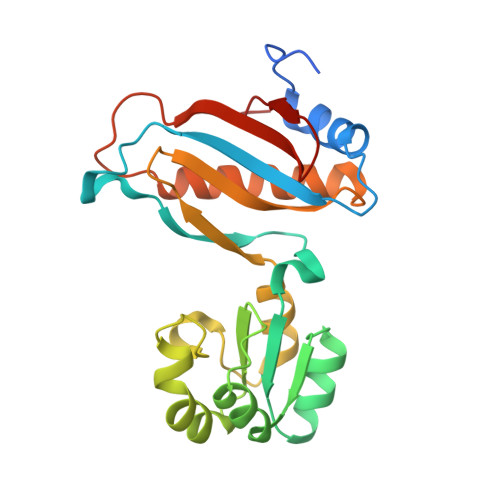Structural analysis of interdomain mobility in ribosomal L1 proteins.
Tishchenko, S., Nikonova, E., Kostareva, O., Gabdulkhakov, A., Piendl, W., Nevskaya, N., Garber, M., Nikonov, S.(2011) Acta Crystallogr D Biol Crystallogr 67: 1023-1027
- PubMed: 22120739
- DOI: https://doi.org/10.1107/S0907444911043435
- Primary Citation of Related Structures:
3TG8 - PubMed Abstract:
Ribosomal protein L1 consists of two domains connected by two oppositely directed fragments of the polypeptide chain in a hinge-resembling fashion. The domain arrangement determines the overall shape of the protein, corresponding to an open or a closed conformation. Ribosomal L1 proteins from archaea demonstrate the open conformation in both isolated and RNA-bound forms. RNA-free ribosomal L1 proteins from bacteria display the closed conformation, whereas in complex with RNA these proteins exist in an open conformation similar to their archaeal counterparts. Analysis of all available L1 amino-acid sequences shows that in comparison to the archaeal proteins, the bacterial proteins possess an extra residue in one of the two interdomain fragments which could be responsible for their closed conformation. To verify this suggestion, a Thermus thermophilus L1 mutant lacking one residue in the fragment corresponding to the hinge was obtained and its crystal structure was solved. It was found that this mutation transformed the closed conformation of the bacterial L1 protein into an open conformation similar to that of the archaeal L1 proteins.
Organizational Affiliation:
Institute of Protein Research, Russian Academy of Sciences, 142290 Pushchino, Moscow Region, Russian Federation.
















